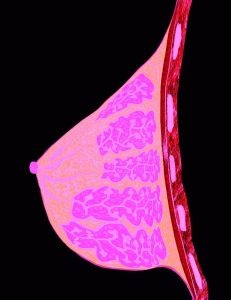 Every year families across the nation are affected by breast or cervical cancer diagnoses. Cancer does not discriminate; it can show up at any time. According to the National Breast Cancer Foundation, Inc., 1 in 8 women will be diagnosed with breast cancer in their lifetime. That is an alarming statistic, but chances of survival significantly increase with early detection.
Every year families across the nation are affected by breast or cervical cancer diagnoses. Cancer does not discriminate; it can show up at any time. According to the National Breast Cancer Foundation, Inc., 1 in 8 women will be diagnosed with breast cancer in their lifetime. That is an alarming statistic, but chances of survival significantly increase with early detection.
Congress passed the Breast and Cervical Cancer Mortality Prevention Act of 1990, which tasked the CDC to develop the National Breast and Cervical Cancer Early Detection Program (NBCCEDP). The purpose of this program is to assist people with lower incomes and without sufficient insurance to obtain timely access to cervical and breast cancer screenings, diagnostics, and treatment services.
In the year 2021, the CDC reported NBCCEDP-funded programs:
- Provided over 250,000 women with breast cancer screening and diagnostic services and diagnosed 2,374 cases of invasive breast cancers and 696 premalignant breast lesions.
- Provided more than 117,000 women with cervical cancer screenings and diagnostic services, diagnosed 120 invasive cervical cancers and 6,136 premalignant cervical lesions, with 34% considered high-grade.
While preventing cancer may be challenging, there are risk factors to be aware of and steps you can take for early detection.
Breast Cancer Risk Factors
While the risk of developing breast cancer increases as we age, additional factors can contribute to our risk level. Breast cancer risk factors include:
- Dense breast tissue
- Breast cancer of a family member
- Starting your menstrual cycle before age 12
- Ingesting birth control pills
- Post-menopause obesity
- Starting menopause later than age 55
- Carrier of the BRCA1 or BRCA2 gene mutation
- Taking hormone replacement therapy during menopause
 Early Detection Screening
Early Detection Screening
Early detection of cervical or breast cancer can be the difference between losing your life or being a survivor. Many people do not get these cancer screenings because they cannot afford them or do not have access to affordable healthcare services.
For breast cancer, early detection can start at home by performing self-breast exams. Simply raise one arm and use the opposite hand to move fingers in small circles over the armpit area and breast area. Feel for any lumps and call your physician if you find anything unusual.
In addition, regular mammogram screenings can also detect breast cancer at the earliest stage. Learn more about the stages and types of breast cancer. It is recommended that women start having annual mammograms between the ages of 40 – 45, according to the American Cancer Society. This recommendation is for women of average risk who:
- Do not carry the BRCA gene
- Do not have a personal history of breast cancer
- Do not have an extensive family history of breast cancer
- Have not had chest radiation before age 30
NBCCEDP also focuses on issues that influence screenings, such as interpersonal, organizational, policy levels, and community factors.
BRCA Mutation Carriers
Patients who carry the BRCA1 and BRCA2 gene mutations have an underlying genetic predisposition for breast and ovarian cancers. The prevalence of the BRCA genetic mutation in the general population is relatively low (one in 400). However, certain populations have a higher incidence. Patients with BRCA mutation have a significantly increased risk for breast and ovarian cancers compared with the general population. Many MR breast imaging services are requested due to a BRCA1 or 2 mutation, like this recent MRI Breast Case Study.
 Breast MR Imaging Services
Breast MR Imaging Services
Some patients may require a breast MRI or ultrasound for further diagnostic testing. MR imaging can reveal small lesions on the breast by using contrast in an MRI machine tailored for breast imaging. This type of testing is typically in patients who are at higher risk of developing breast cancer. Speak with your physician about any concerns you may have regarding your risk of breast or cervical cancer.
Greater Waterbury Imaging Center, GWIC, employs highly trained screening professionals and MR technologists who have extensive knowledge of MR imaging services, including breast MR imaging. Our staff is passionate about the imaging services we provide and the communities we serve, and we ensure our patients are comfortable during their MR imaging procedures.
With so many women at risk for breast or cervical cancer, it is crucial that you take preventative measures and get regular screenings. With early detection and treatment services, your chance of a good prognosis and survival drastically increases.
GWIC encourages women to practice regular self-breast exams and get regular cervical and breast cancer screenings. We are committed to the ongoing health and wellness of our patients and urge you to speak with your physician about your risk factors. Early detection is the key to a positive prognosis and can save lives. Contact us today to learn more about our breast MR imaging services.


